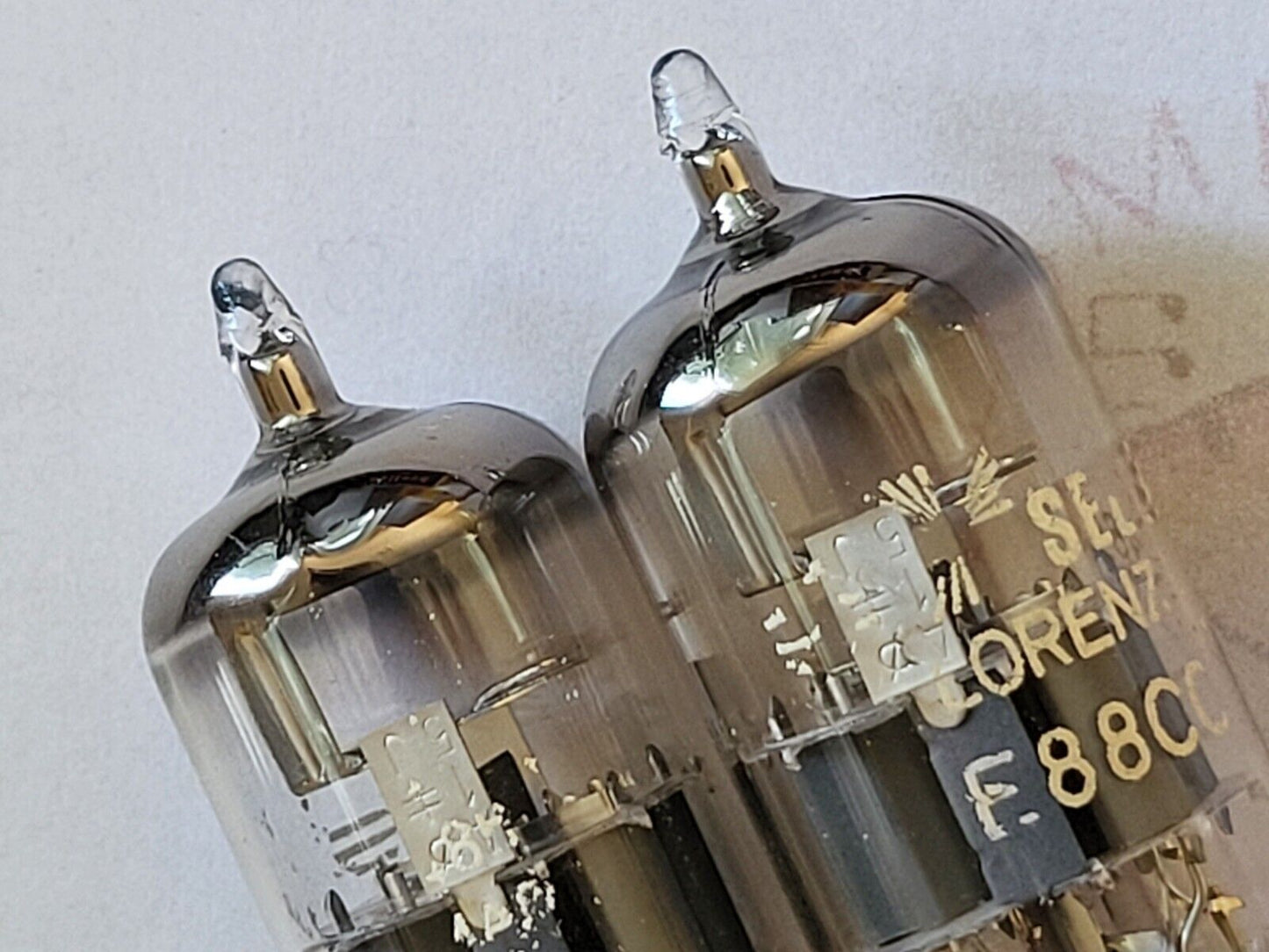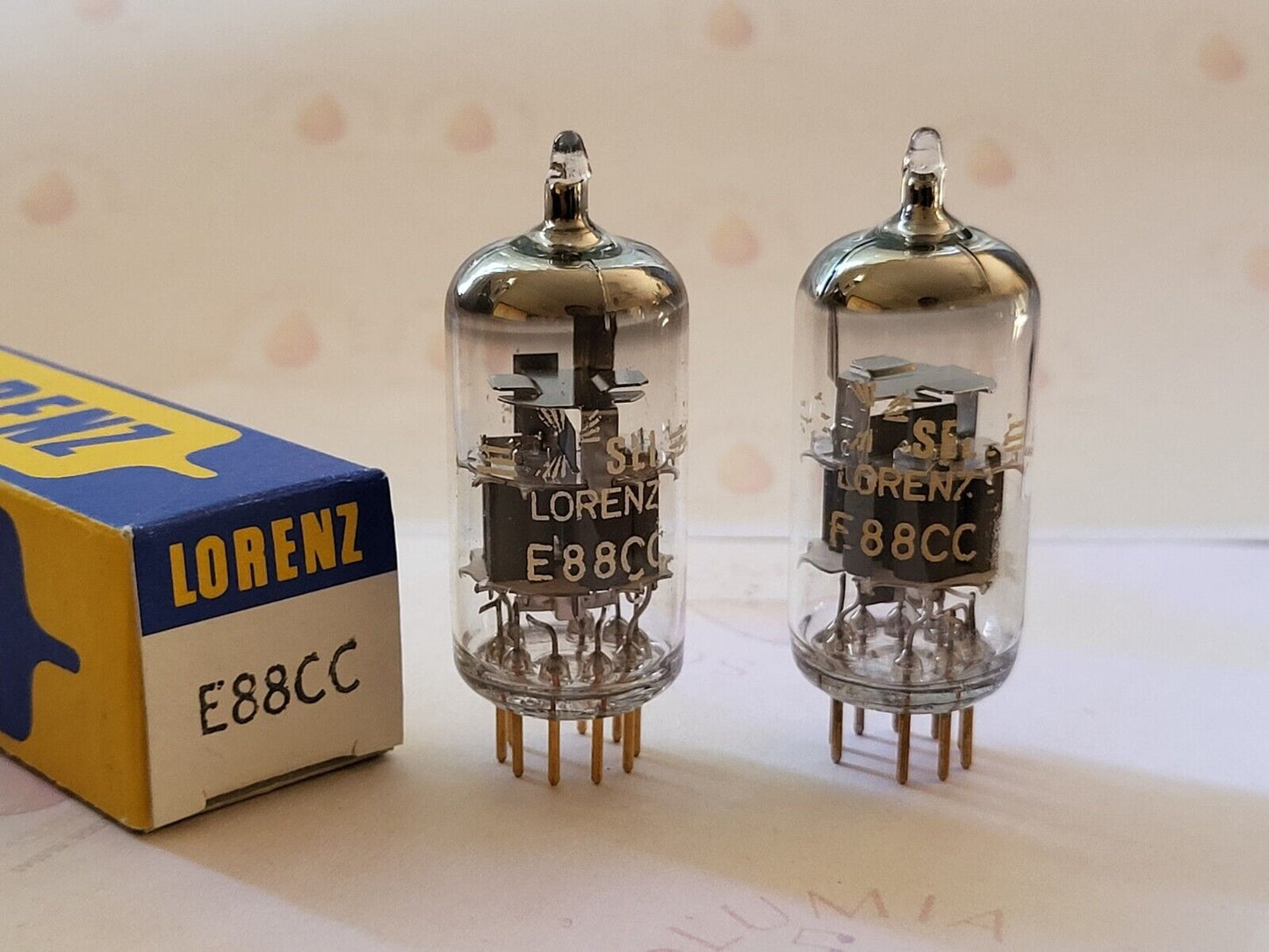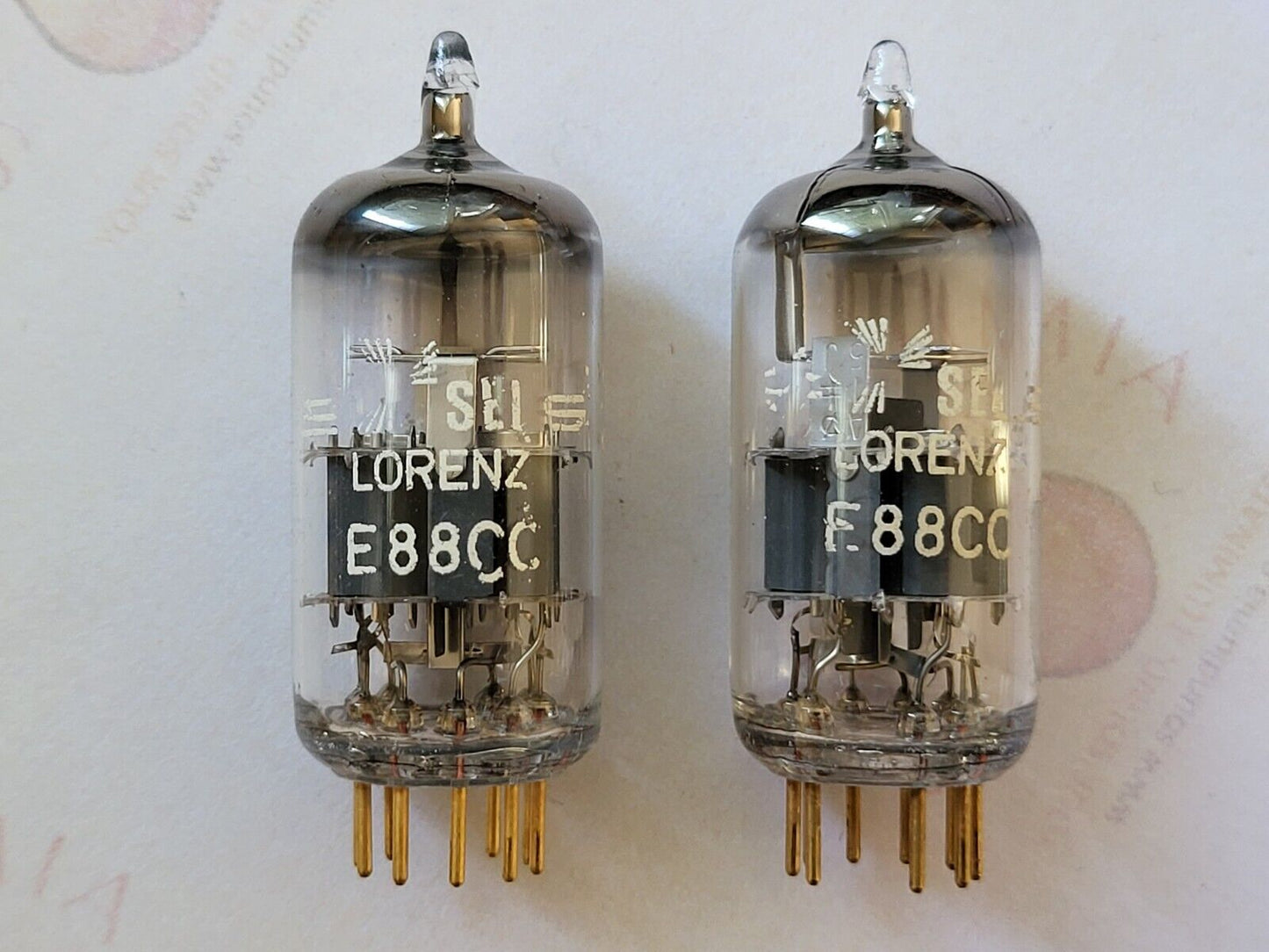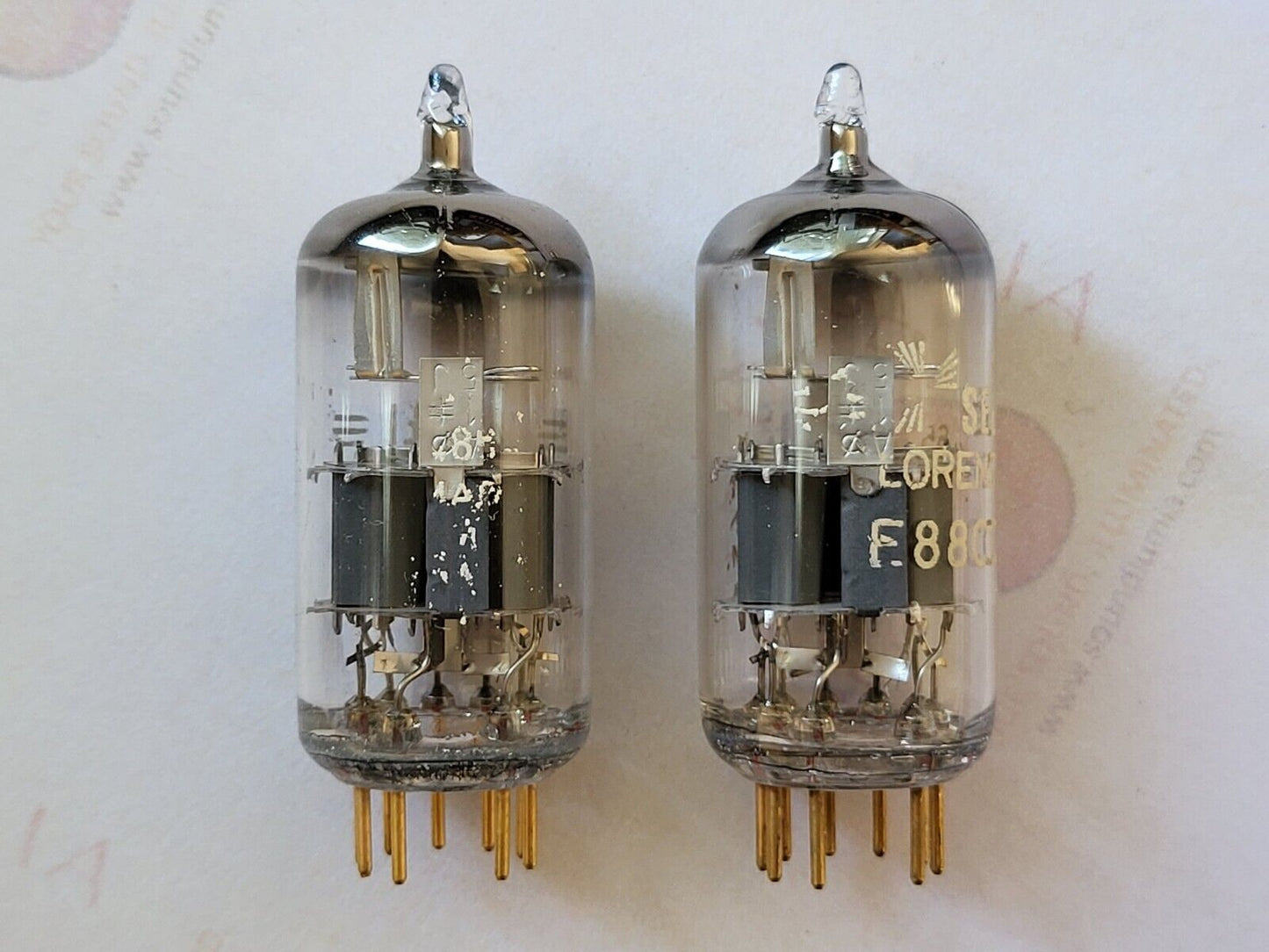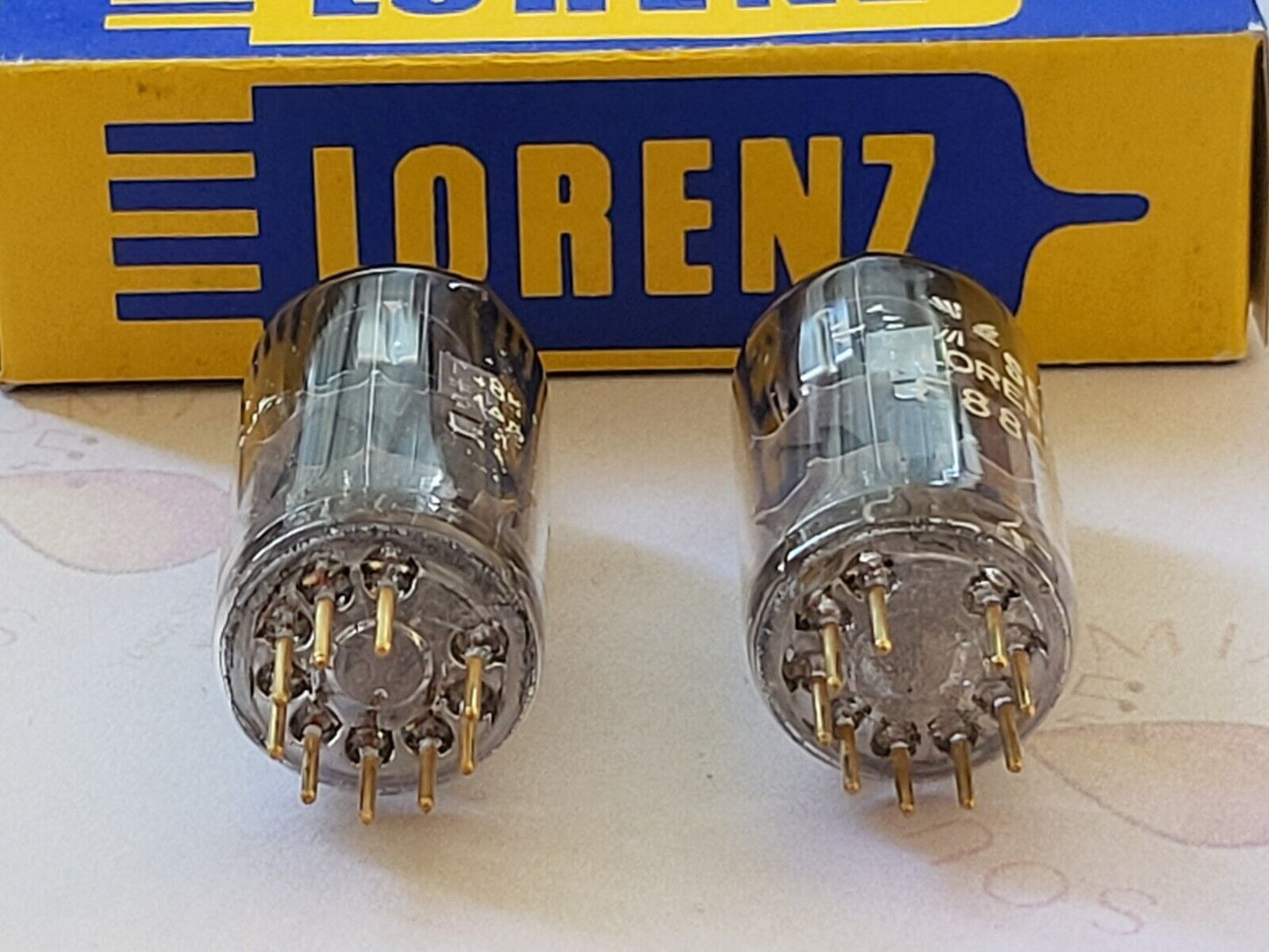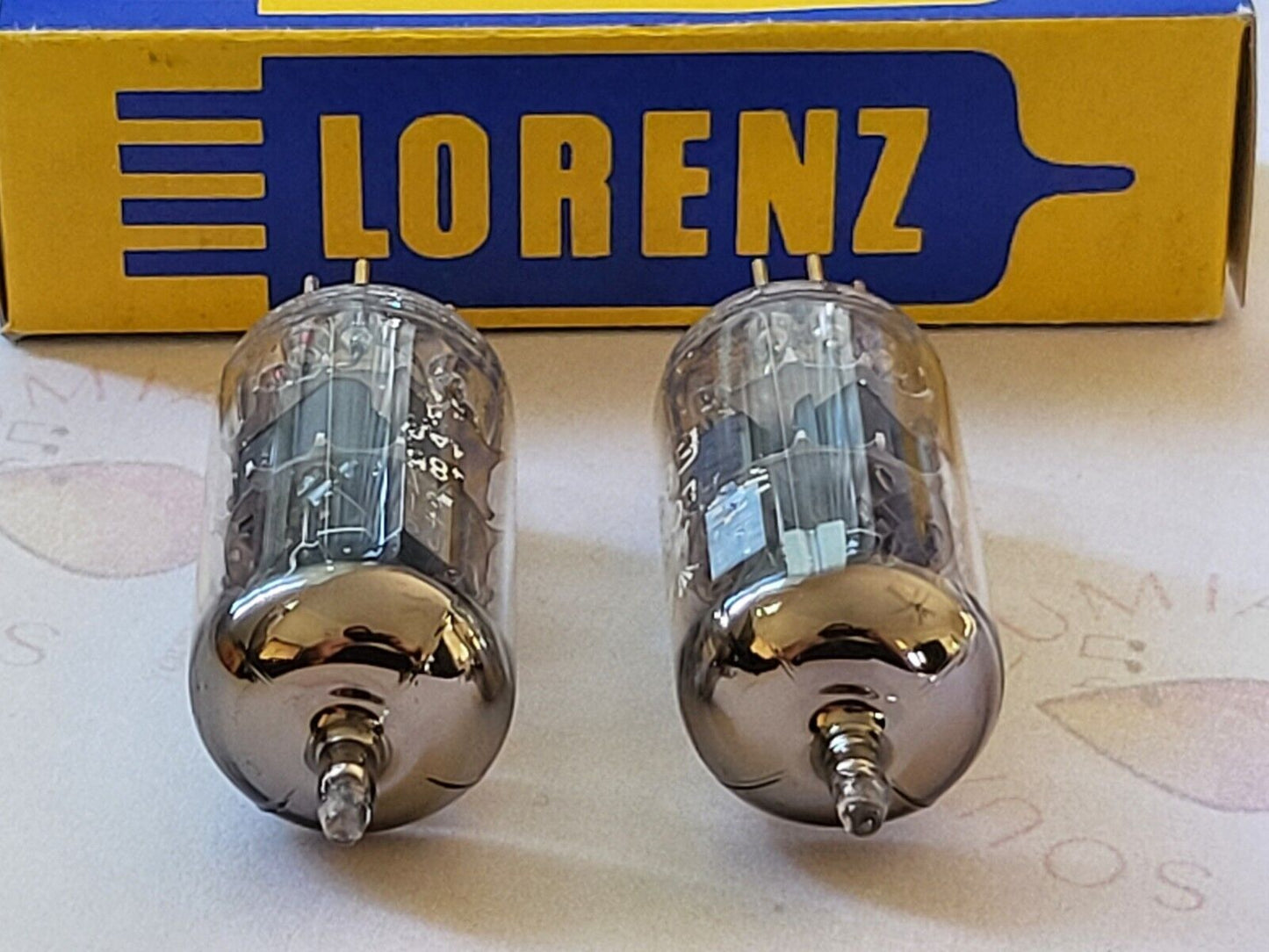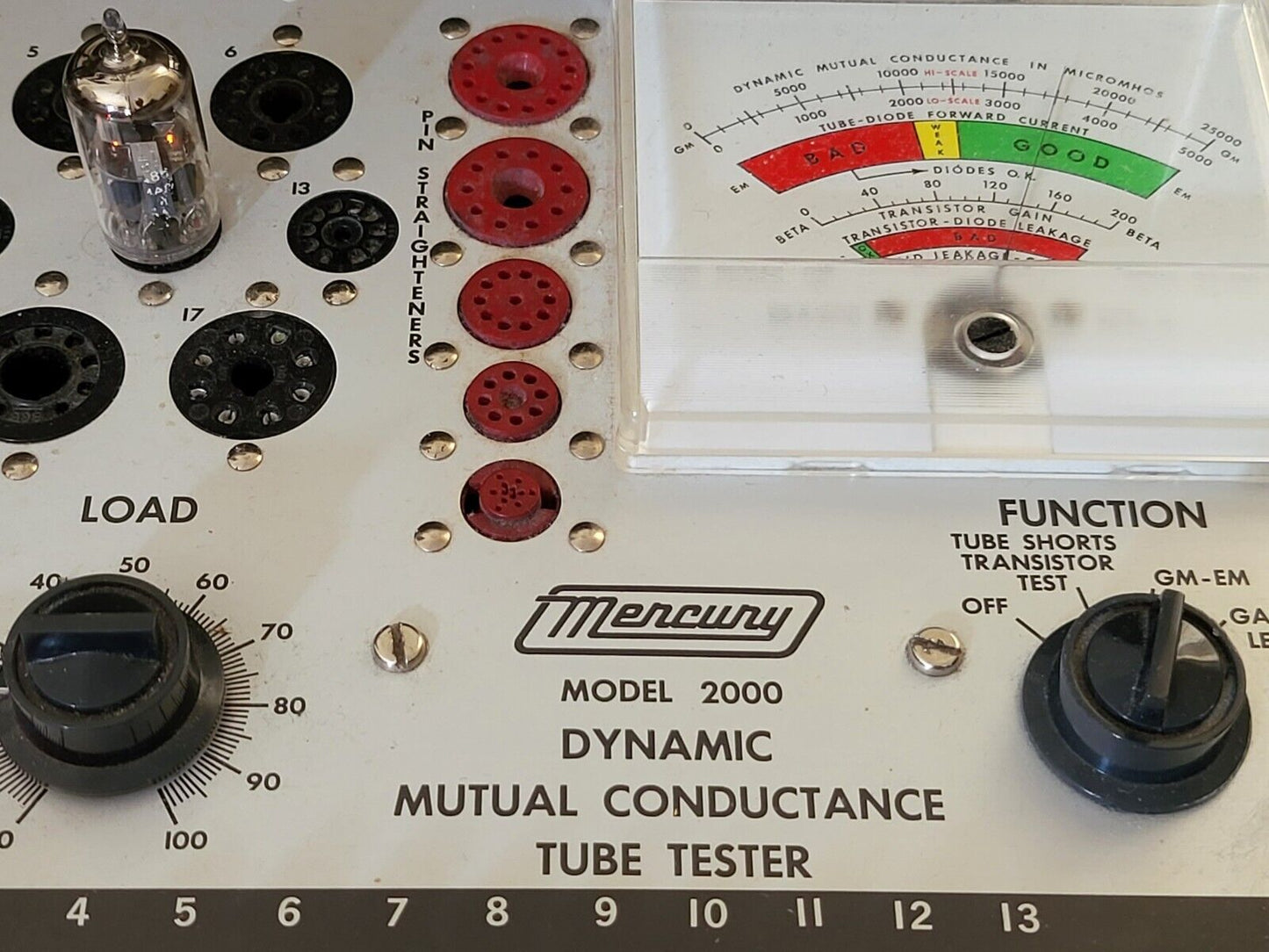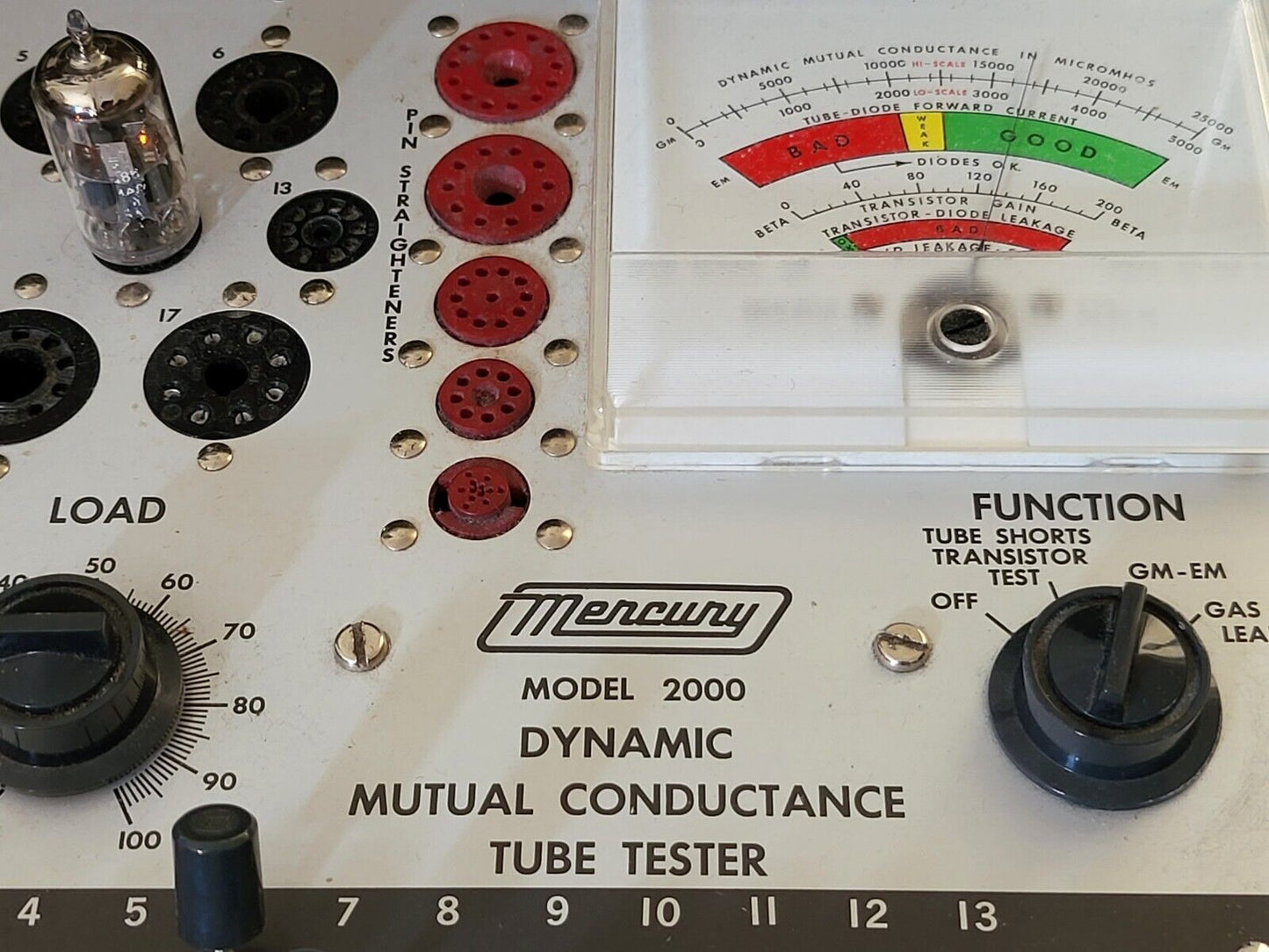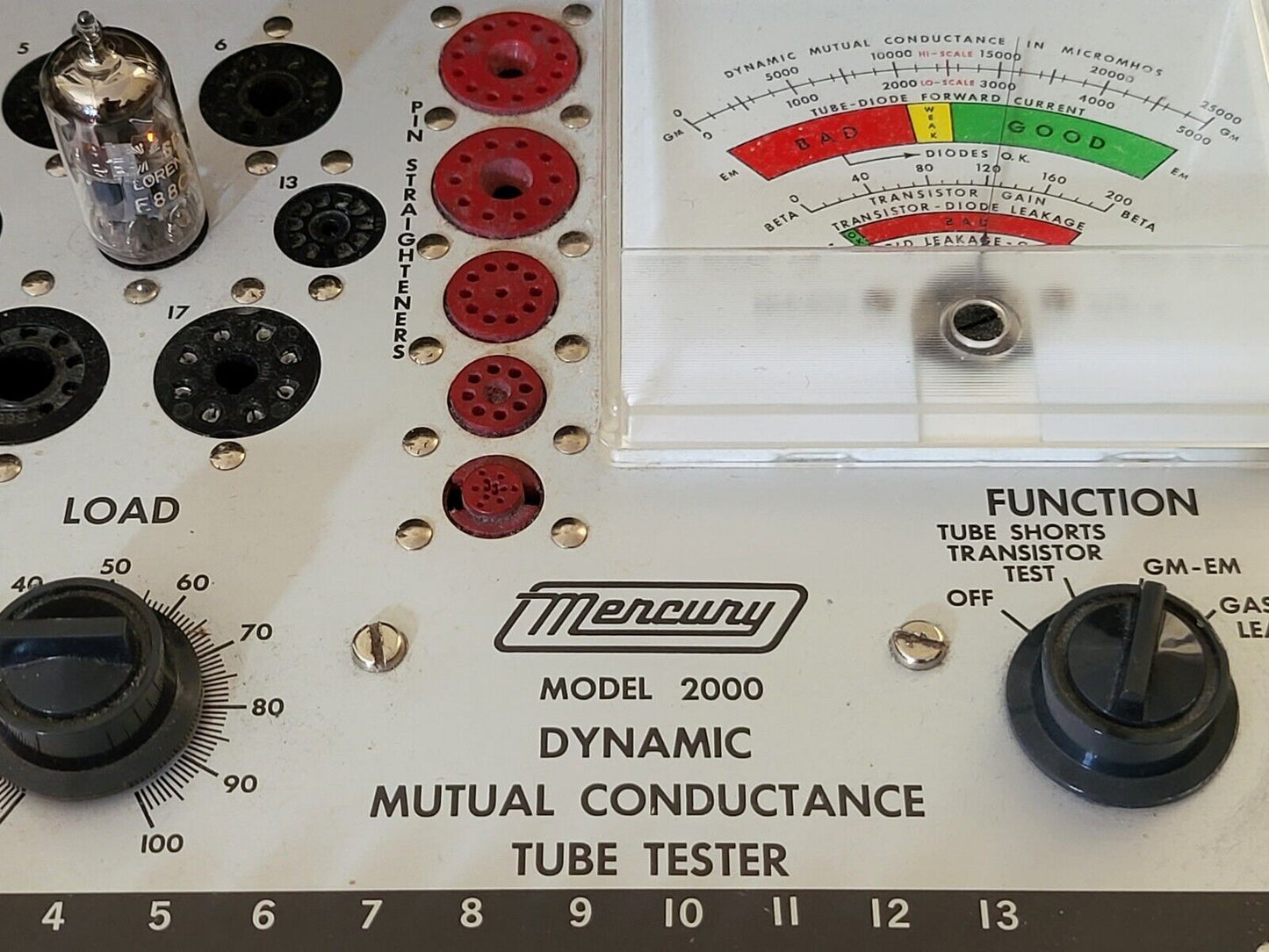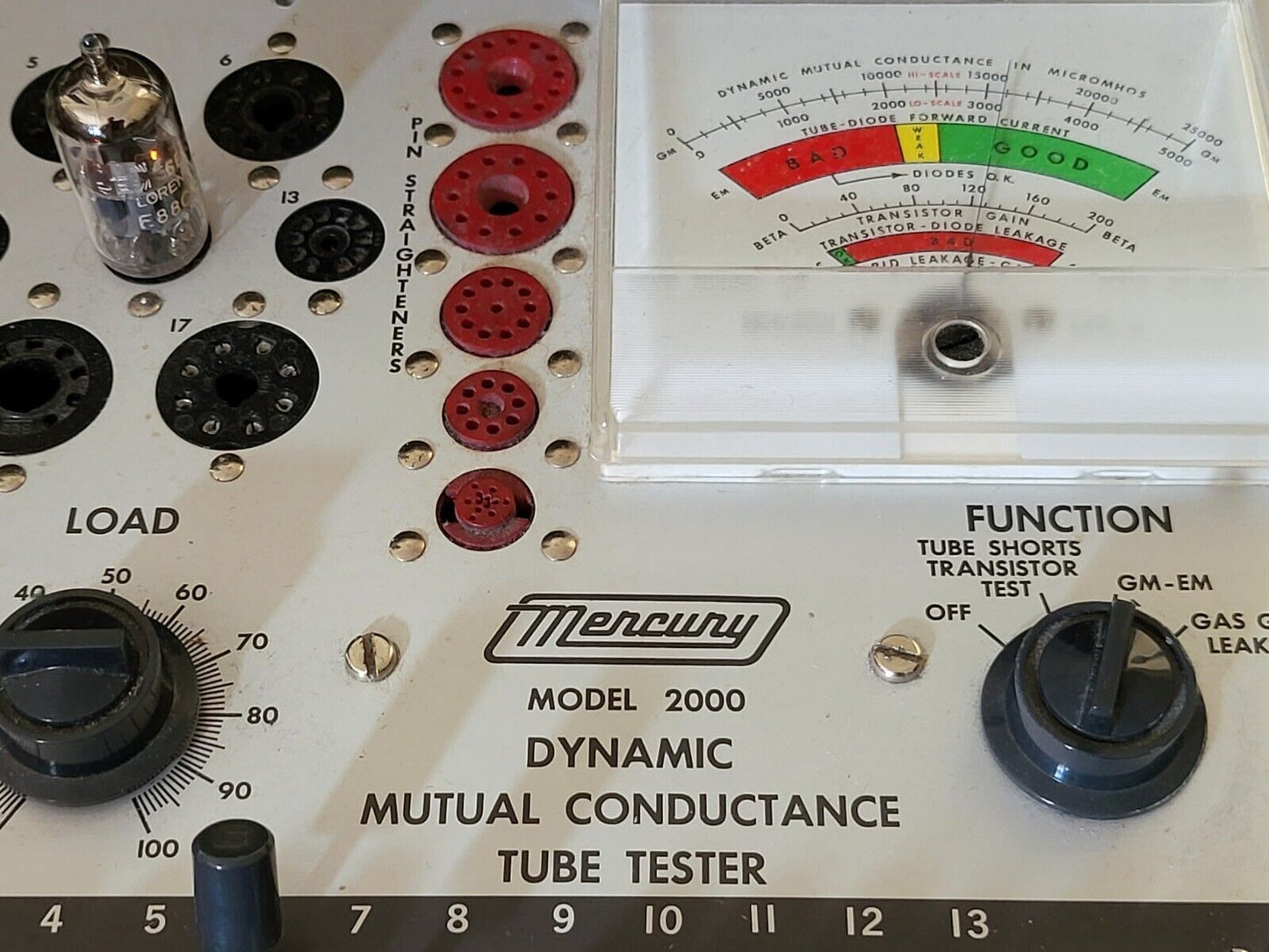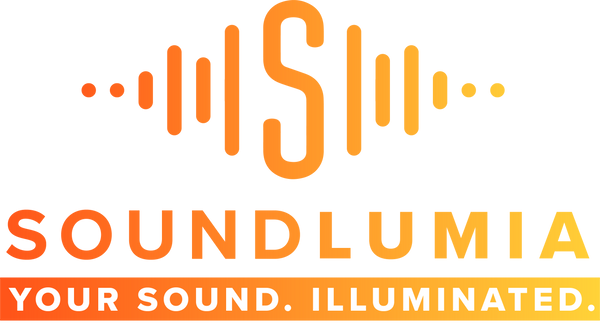1
/
of
10
Siemens
Siemens E88CC Gray Shields Matched Pair - Munich A0 1‡ 5J - Lorenz Label - NOS
Siemens E88CC Gray Shields Matched Pair - Munich A0 1‡ 5J - Lorenz Label - NOS
No reviews
Regular price
$450.00 USD
Regular price
Sale price
$450.00 USD
Unit price
/
per
Shipping calculated at checkout.
Couldn't load pickup availability
Product Summary
There're two types of rarities. The first type, or the "regular rare", refers to something that you know exists but just haven't had a chance to get in close contact with and yet you know that day will come (and perhaps will many times), and you are used to it, such as a D-getter 6922 tube or even a pinched waist edition of something. The second type, however, doesn't exist in our normal vocabulary or most people's living memories, such as Halley's Comet, which comes around every generation of people on Earth. Those events are not rare...they are called "elusively rare."
So which category of rarity should a super strong NOS matched pair of Siemens E88CC with the following features go into? Gray shields (perhaps the last generation as the place of date code indicates), Lorenz labeled (Halley's Comet), the very FIRST time 3-line Munich date codes were printed on metal tag inside the tube glass and perhaps also the last time because 2-line date codes were used instead later (Halley's Comet), and same code A0 1‡ 5J on both tubes.
Sound Characteristics
The classic beauty in sound, admired by audiophiles for almost 60 years and will still be our top choice in the next 60 years, the early 1960s Siemens tone has been considered the "reference sound" for critical listeners who need to upgrade the sound quality at phono stage for decades. The airy and transparent sound produced by these vintage Siemens tubes has been unrivaled even to this day. The magically extended yet never tizzy highs, coupled with the slightly focused upper mid-range, deliver a clear presentation of the entire frequency spectrum, completed by the precise and deep controlled bass. And the most defining sound characteristic of Siemens E88CC tubes is their ability to retrieve the deepest levels of detail in sound, and these hidden sonic layers can go a long way to revealing the subtle ambient clues that help complete building a truly 3D holographic presentation. While as quiet and analytical as the best Telefunken E88CC tubes, Siemens E88CC's produce a warmer, smoother and more musical sound. To see how the two German brands in vintage tube sound compare to each other, please check out our full sound review of a 1963/64 Matched Pair of Telefunken E88CC tubes here: https://www.ebay.com/itm/266376181581
Professional Sound Evaluation
The pair worked wonderfully and sounded terrific in our professional studio setup for monitoring.
- Input: Cambridge Audio CXC V2 dedicated CD transport + Schiit Audio Bifrost 2 Multibit DAC
- Amplification: Liquid Platinum Tube Amplifier by Alex Cavalli
- Output: Focal Clear MG Pro open-back headphones
Our full tube sound review was written 100% based on the actual listening experience while this pair of tubes were running in the system described above.
Professional Tube Testing
NO shorts or grid leakage. NO noise or microphonics.
Both tubes tested Super Strong NOS (120%+ nominal mutual conductance) on a reliable and recently calibrated Mercury 2000 tube tester with the following result (both in mutual conductance in uMhos and in percentage of the NOS/NEW value):
Tube 1(left): 17,500/16,800 (140%/134%)
Tube 2(right): 158,000/16,000 (126%/128%)
Good tubes start at 7000 and new tubes (incl. NOS/NIB) 12,500 - 13,000, and the Mercury 2000's rated mutual conductance for new tubes is 12,500. Test result can also be seen in the pictures. In case you wonder what all these numbers mean to your sound experience, it's actually quite straightforward: mutual conductance directly translates to a tube's ability to amplify sound so the higher the numbers the stronger the tube is.
Appearance & Cosmetic condition
This pair is in immaculate cosmetic condition. At least 95% of the silkscreen is perfectly preserved. The 3-line Munich date codes (IDENTICAL on both tubes) printed on the metal tag:
A0 1‡ 5J (A0 = E88CC, 1‡ = Munich production, 5 = 1965, J = October)
Share
